I’ve been on a mission to find the perfect collagen supplement to support my skin, joints, and overall wellness. After countless cups of coffee mixed with powdery promises, I narrowed it down to two heavyweights: NativePath Collagen and Vital Proteins.
My goal?
To figure out which one truly delivers. In this article, I’ll share my experience, weighing the pros and cons of each, comparing their key features, and helping you decide which might fit your lifestyle.
Let’s get started with a side-by-side look at these popular collagen powders.
A Brief Comparison Table
| Feature | NativePath Collagen | Vital Proteins Collagen Peptides |
| Collagen Types | Type I & III | Type I & III |
| Source | Grass-fed, pasture-raised bovine | Grass-fed, pasture-raised bovine |
| Serving Size | 10g per scoop | 20g per two scoops |
| Price (approx.) | $37.99 for 25 servings ($1.52/serving) | $27 for 27 servings ($1.00/serving) |
| Additional Ingredients | None (pure collagen) | Vitamin C, hyaluronic acid (in some blends) |
| Flavors | Unflavored only | Unflavored, chocolate, vanilla, lemon, etc. |
| Third-Party Testing | No NSF certification | NSF-certified (some products) |
| Mixability | Smooth, clump-free | Good, but some residue in cold liquids |
| Scoop Included | Yes | No (discontinued) |
Why I Started Exploring Collagen Supplements?
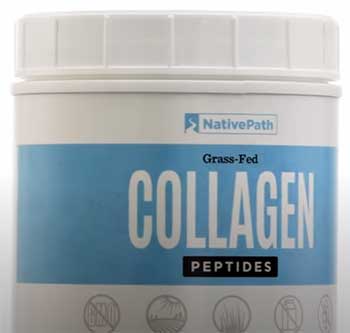
A couple of years ago, I noticed my knees creaking like an old wooden floorboard, and my skin wasn’t bouncing back like it used to.
A friend swore by collagen supplements, claiming they turned her hair shinier and her joints less cranky.
Skeptical but curious, I decided to give it a shot. Collagen, after all, is the body’s most abundant protein, making up our skin, bones, tendons, and more.
As we age, our natural production slows, so supplementing seemed like a logical step.
I chose NativePath and Vital Proteins because they’re both big names with solid reputations.
NativePath markets itself as pure and straightforward, while Vital Proteins boasts a broader product line and celebrity endorsements.
My plan was to try both for a few months, track how they made me feel, and compare their practical differences. Here’s what I found.
NativePath Collagen: My Experience
I started with NativePath’s Collagen Peptides, drawn to its no-frills approach. Each scoop delivers 10 grams of hydrolyzed Type I and III collagen, sourced from grass-fed, pasture-raised cows.
Type I is great for skin, hair, nails, and bones, while Type III supports muscles and blood vessels. I liked the idea of a clean formula—zero additives, no sugars, just collagen.
Pros of NativePath Collagen
- Pure and Simple Formula
The first thing I noticed was how minimalistic NativePath is. It’s just collagen peptides, nothing else. For someone like me who’s wary of artificial sweeteners or fillers, this was a win.
I mixed it into my morning coffee, and it dissolved like a dream—no clumps, no gritty texture. It didn’t change the taste, which meant I could add it to smoothies, soups, or even water without a fuss.
- Easy to Measure
NativePath includes a scoop, which made dosing a breeze. I stuck to one scoop daily (10 grams), though their website suggests doubling up to 20 grams for a “loading phase” to jumpstart results.
The scoop ensured I wasn’t guessing, and I appreciated the consistency. After a few weeks, I noticed my nails seemed stronger—less peeling, which was a small but welcome change.
- Sourced Responsibly
Knowing the collagen comes from grass-fed, pasture-raised cows gave me peace of mind. NativePath emphasizes sustainable sourcing, and while I’m no farmer, I’d rather support brands that prioritize animal welfare.
The cows are primarily from South America, and the company claims they’re free of hormones and antibiotics.
- Supports Skin and Joints
After about six weeks, my skin felt a bit more hydrated, especially around my eyes where fine lines had started creeping in.
My knees? Still creaky on occasion, but I could squat during workouts without wincing as much. Studies suggest collagen peptides can improve skin elasticity and joint comfort, and my experience seemed to align with that.
Cons of NativePath Collagen
- Higher Price Per Serving
At $37.99 for 25 servings, NativePath isn’t cheap. That’s about $1.52 per scoop, which adds up if you’re doubling up as recommended for the loading phase.
I found myself hesitating to use it twice a day because my wallet was giving me side-eye. For budget-conscious folks, this could be a dealbreaker.
- No Third-Party Certification
Unlike some competitors, NativePath doesn’t have NSF or USP certification. While they claim third-party testing for purity, I couldn’t find clear documentation.
I’m not a stickler for certifications, but it would’ve boosted my confidence, especially at this price point.
- Limited Dosage Per Scoop
Each scoop is only 10 grams, which is half of what some studies recommend for optimal benefits (15-20 grams daily). To hit that sweet spot, I’d need two scoops, doubling the cost.
I stuck with one to stretch the canister, but I wondered if I was shortchanging myself on results.
- Unflavored Only
While I didn’t mind the unflavored powder, I know folks who prefer a bit of variety. NativePath doesn’t offer flavored options, so if you’re not a fan of mixing plain collagen into your drinks, you’re out of luck.
I got used to it, but sometimes I craved a chocolate or vanilla kick.
Vital Proteins Collagen Peptides: My Take
Next up was Vital Proteins Collagen Peptides, the brand I’d seen plastered across Instagram with endorsements from folks like Jennifer Aniston. It also uses grass-fed, pasture-raised bovine collagen, delivering Type I and III peptides.
A serving is two scoops (20 grams), which is double NativePath’s dose per scoop.
Pros of Vital Proteins
- Higher Collagen Per Serving
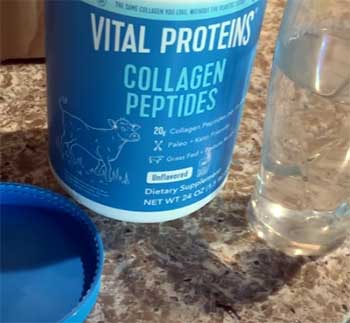
Vital Proteins packs 20 grams of collagen into each serving, which aligns better with research suggesting 15-20 grams daily for skin and joint benefits.
I felt like I was getting more bang for my buck, especially since my joints seemed less achy after a month.
My hair also felt thicker, though that could’ve been wishful thinking.
- Variety of Flavors and Products
Unlike NativePath, Vital Proteins offers a range of flavors—unflavored, chocolate, vanilla, even lemon. I tried the chocolate in a smoothie, and it was like drinking a milkshake without the guilt.
They also have marine collagen, capsules, and single-serve packets, which are handy for travel. The variety kept things interesting.
- Third-Party Certification
Many Vital Proteins products are NSF-certified, meaning they’ve been tested for purity and quality. This was reassuring, especially since I’m popping this stuff daily. Knowing an independent lab gave it a thumbs-up made me trust the brand more.
- Affordable Price Point
At around $27 for 27 servings, Vital Proteins costs about $1 per serving—cheaper than NativePath. Even if I used it twice a day, it wouldn’t break the bank. The lower price made it easier to experiment with recipes, like adding it to oatmeal or yogurt.
Cons of Vital Proteins
- No Scoop Included: Vital Proteins recently ditched the scoop, which was a pain. I had to eyeball two tablespoons or dig out a measuring spoon, and I’m not exactly a precision chef. This led to inconsistent dosing, and I worried I wasn’t getting the full 20 grams some days.
- Mixability Issues: While it dissolved well in hot coffee, I noticed some residue in cold water or smoothies. It wasn’t a dealbreaker, but I had to blend or shake vigorously to avoid a chalky texture. NativePath edged it out for smoother mixing.
- Additional Ingredients in Some Blends: The unflavored version is pure collagen, but flavored options and some blends include hyaluronic acid and vitamin C. These sound great—hyaluronic acid hydrates skin, and vitamin C boosts collagen synthesis—but I wasn’t sure I needed them in my powder. I’d rather take those separately if I want them.
- Overhyped Marketing: Vital Proteins leans hard into celebrity endorsements, which felt a bit gimmicky. I don’t care if a Hollywood star uses it; I want results. The hype made me question if I was paying for branding rather than quality, though the product itself held up.
Key Differences Between NativePath Collagen And Vital Proteins
After months of testing, I started noticing patterns. NativePath felt like the purist’s choice—clean, simple, and effective for basic collagen needs.
Vital Proteins, on the other hand, was the versatile all-rounder, with more options and a higher dose per serving. Here’s how they stacked up in areas that mattered most to me.
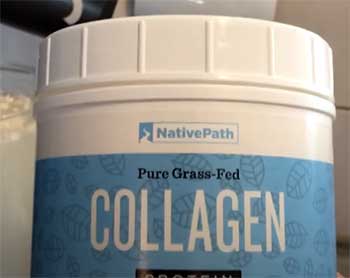
- Sourcing and Quality: Both brands use grass-fed, pasture-raised bovine collagen, so they’re neck-and-neck here. NativePath emphasizes sustainability, while Vital Proteins highlights NSF certification. I leaned toward Vital Proteins for the third-party testing, but NativePath’s transparency about sourcing was reassuring.
- Dosage and Value: Vital Proteins wins on dosage—20 grams per serving versus NativePath’s 10 grams. If you’re aiming for the research-backed 15-20 grams daily, Vital Proteins gets you there in one go, and it’s cheaper per serving. NativePath’s higher price stung, especially since I’d need two scoops to match Vital Proteins’ dose.
- Mixability and Taste: NativePath dissolved flawlessly in everything I tried, hot or cold. Vital Proteins was solid in hot liquids but left a slight grit in cold ones. Taste-wise, NativePath’s unflavored powder was truly neutral, while Vital Proteins’ flavored options added fun but weren’t always necessary.
- Convenience: The lack of a scoop with Vital Proteins was annoying, especially since I’m not great at eyeballing measurements. NativePath’s included scoop made it idiot-proof. However, Vital Proteins’ single-serve packets were a lifesaver for trips, something NativePath doesn’t offer.
- Results: Both improved my nails and skin hydration after a couple of months, but Vital Proteins seemed to edge out slightly for joint comfort, likely due to the higher dose. My hair felt about the same with both—maybe a bit shinier, but nothing dramatic. It’s hard to say definitively since results vary by person.
What The Science Says?
Collagen supplements aren’t magic, but research backs some benefits. A 2021 study in the International Journal of Dermatology found hydrolyzed collagen improves skin hydration and elasticity.
Another study in Nutrients (2019) showed 15-20 grams daily can reduce joint pain in athletes. Both brands use hydrolyzed peptides, which are easier for the body to absorb, so they’re on solid ground scientifically.
The catch? Consistency matters. I noticed the most benefits after two months of daily use, and skipping days didn’t do me any favors. Whether you choose NativePath or Vital Proteins, sticking with it is key.
Which One Fits Your Lifestyle?
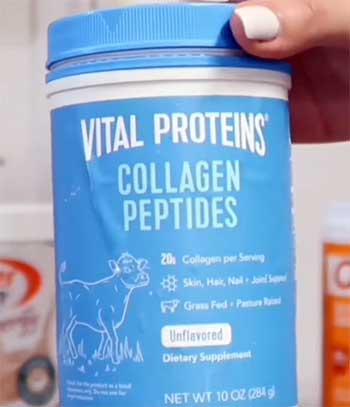
Picking between these depends on what you value.
If you want a no-nonsense, clean collagen with easy mixing, NativePath is your guy.
It’s pricier, but the simplicity and scoop make it user-friendly.
If you love variety, travel often, or want more collagen for less money, Vital Proteins is the way to go—just be ready to measure it yourself.
I leaned toward Vital Proteins because the higher dose and lower price fit my budget and goals better.
Plus, the flavored options were a nice change of pace.
But if I were super sensitive to additives or certifications weren’t a priority, NativePath would’ve been a strong contender.
My Routine And Tips For Using Collagen
Here’s how I worked collagen into my day: I’d mix a scoop (or two for Vital Proteins) into my morning coffee or a smoothie. Sometimes I’d toss it into soup or yogurt for variety.
Pro tip: use a frother for cold drinks to avoid clumps, especially with Vital Proteins. I also made sure to pair it with vitamin C-rich foods (like berries) to boost absorption, since collagen synthesis relies on it.
If you’re new to collagen, start with one serving daily and track how you feel after a month. Skin and nail changes showed up first for me, while joint improvements took longer. Don’t expect miracles overnight—it’s a slow burn.
Frequently Asked Questions (FAQ)
Effectiveness depends on your goals, but Vital Proteins offers a higher dose (20g per serving) at a lower price, making it a strong choice for skin and joint benefits. NativePath is solid for a clean formula but may require double scoops for similar results.
No major lawsuits against Vital Proteins have been widely reported as of 2025. Always check recent news for updates, as legal matters can change.
Costco’s inventory rotates based on demand and supplier agreements. They may have paused Vital Proteins to stock other brands, but it’s still available at other retailers like Amazon.
Jennifer Aniston has endorsed Vital Proteins publicly, but celebrity endorsements don’t guarantee personal use. She’s likely used it, given her brand ambassador role.
Final Thoughts: Your Collagen Journey Awaits
You’re probably wondering which collagen will give you that glow-up or ease those achy joints. I get it—I was there too. After trying NativePath and Vital Proteins, I can say both are quality options, but your choice depends on what you prioritize.
NativePath keeps it pure and simple, perfect if you want no additives and a scoop for easy dosing. Vital Proteins offers more collagen, variety, and affordability, though you’ll need to measure carefully.
Whichever you pick, stick with it, and you might just notice stronger nails, smoother skin, or happier joints. What’s your next step—grabbing a canister and mixing it into your routine? Let me know how it goes.

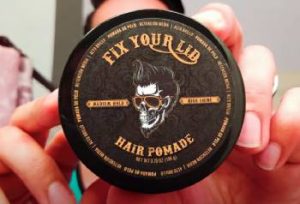
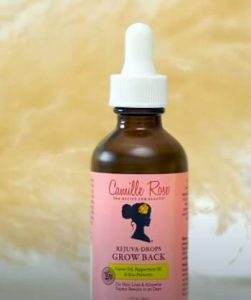
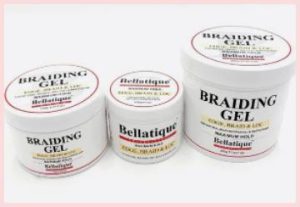
I don’t agree on mix ability. The reason I prefer Vital Protein because it Never clumps and Native Path always clumps. In fact Native Path CUSTOMER SERVICE sent me a frother when I called and complained that what I read about Native Path was NOT true as it has never Mixed Well for me and Vital Protein has Always…No Clumps!